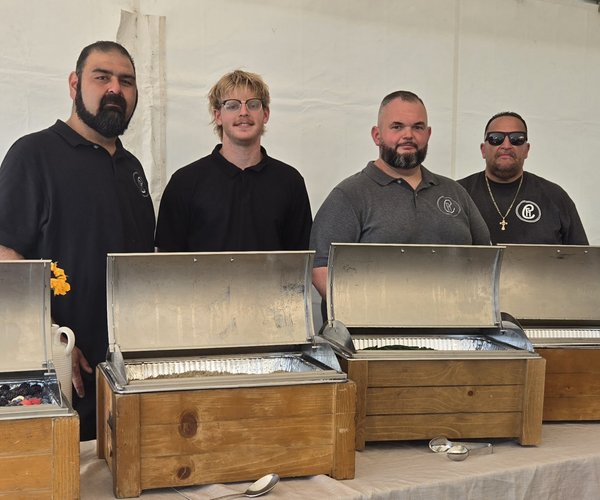H1N1 Flu Virus Update
In America
• 22 million people have had H1N1
• 3,900 deaths since April
• 98,000 hospitalizations from April to Oct. 17
In California
• 5,380 hospitalizations
• 297 deaths
In Stanislaus County
• 154 hospitalizations
• 10 deaths
In America
• 22 million people have had H1N1
• 3,900 deaths since April
• 98,000 hospitalizations from April to Oct. 17
In California
• 5,380 hospitalizations
• 297 deaths
In Stanislaus County
• 154 hospitalizations
• 10 deaths
Revised numbers from the Centers for Disease Control estimate that 22 million Americans have been sickened by H1N1 and as many as 3,900 have died since the novel influenza virus made its first appearance in the United States in April.
The dramatic rise in numbers does not signify that the H1N1 virus, also known as swine flu, is spreading quicker or getting deadlier, according to the CDC. The new estimates are, however, giving a “more accurate picture” of the size of the pandemic, said Dr. Anne Schuchat, the director of the National Center for Immunization and Respiratory Diseases.
The CDC is estimating an average of 98,000 people have been hospitalized with an H1N1-related illness from April to Oct. 17.
The new numbers also show the toll the virus has taken on children. An estimated 8 million children below the age of 17 have been infected with the virus, 36,000 have been hospitalized, and 540 have died since April.
Schuchat said the number of flu cases reported worldwide now are higher than they’ve ever been since the 1918 Spanish flu pandemic that killed between 22 million and 40 million people worldwide.
The new figures come as the California Department of Public Health is clamoring that more vaccine needs to be made available to the state. California has received 4.5 million doses of the 6.2 million doses of vaccine it was supposed to have received by this point in the flu season. The vaccine allocation is well below the 18 million the state needs to inoculate all the children and adults identified as the most vulnerable to the virus.
State public health director Dr. Mark Horton said the department has stopped trying to predict when more doses might become available.
“I think the Centers for Disease Control has similarly been more reticent about predicting because of the continued production problem,” Horton said.
There have been a series of delays reported by the drug companies that manufacture the vaccine, including problems growing a viable strain in great numbers.
The allocation of vaccines distributed in counties throughout California has been uneven Horton said and the state public health department is trying to get more doses out to areas that have been shortchanged.
Stanislaus County is one such county to have received less than their fair share, according to the county health and Human Services Agency.
Health care providers across the county are reporting that they have limited supplies of the vaccine on hand and are waiting for the rest of their order to be shipped.
In Stanislaus County there have been 154 hospitalizations and 10 deaths from H1N1. State wide the figures are 5,380 hospitalizations and 297 deaths.
The county public health department has decided to use their limited supply of the vaccine to inoculate pregnant women.
“Public Health is working to ensure that those most vulnerable to severe complications from H1N1 receive the needed vaccinations,” said Cleopathia Moore-Bell, the maternal, child, adolescent health director and associate director at the Health Services Agency. “To ensure this we will be working with the health care provider community to make sure that pregnant women closest to delivery receive vaccine.”
To contact Sabra Stafford, e-mail sstafford@turlockjournal.com or call 634-9141 ext. 2002.
The dramatic rise in numbers does not signify that the H1N1 virus, also known as swine flu, is spreading quicker or getting deadlier, according to the CDC. The new estimates are, however, giving a “more accurate picture” of the size of the pandemic, said Dr. Anne Schuchat, the director of the National Center for Immunization and Respiratory Diseases.
The CDC is estimating an average of 98,000 people have been hospitalized with an H1N1-related illness from April to Oct. 17.
The new numbers also show the toll the virus has taken on children. An estimated 8 million children below the age of 17 have been infected with the virus, 36,000 have been hospitalized, and 540 have died since April.
Schuchat said the number of flu cases reported worldwide now are higher than they’ve ever been since the 1918 Spanish flu pandemic that killed between 22 million and 40 million people worldwide.
The new figures come as the California Department of Public Health is clamoring that more vaccine needs to be made available to the state. California has received 4.5 million doses of the 6.2 million doses of vaccine it was supposed to have received by this point in the flu season. The vaccine allocation is well below the 18 million the state needs to inoculate all the children and adults identified as the most vulnerable to the virus.
State public health director Dr. Mark Horton said the department has stopped trying to predict when more doses might become available.
“I think the Centers for Disease Control has similarly been more reticent about predicting because of the continued production problem,” Horton said.
There have been a series of delays reported by the drug companies that manufacture the vaccine, including problems growing a viable strain in great numbers.
The allocation of vaccines distributed in counties throughout California has been uneven Horton said and the state public health department is trying to get more doses out to areas that have been shortchanged.
Stanislaus County is one such county to have received less than their fair share, according to the county health and Human Services Agency.
Health care providers across the county are reporting that they have limited supplies of the vaccine on hand and are waiting for the rest of their order to be shipped.
In Stanislaus County there have been 154 hospitalizations and 10 deaths from H1N1. State wide the figures are 5,380 hospitalizations and 297 deaths.
The county public health department has decided to use their limited supply of the vaccine to inoculate pregnant women.
“Public Health is working to ensure that those most vulnerable to severe complications from H1N1 receive the needed vaccinations,” said Cleopathia Moore-Bell, the maternal, child, adolescent health director and associate director at the Health Services Agency. “To ensure this we will be working with the health care provider community to make sure that pregnant women closest to delivery receive vaccine.”
To contact Sabra Stafford, e-mail sstafford@turlockjournal.com or call 634-9141 ext. 2002.






